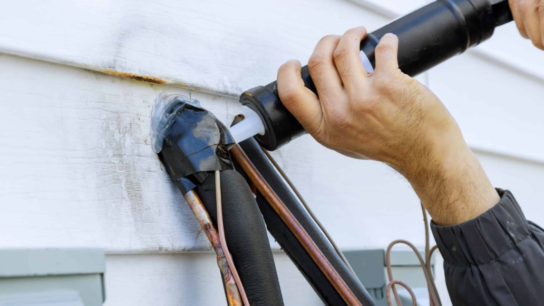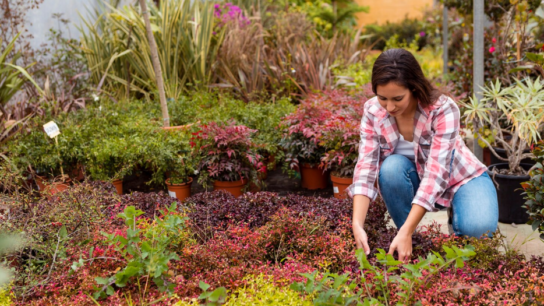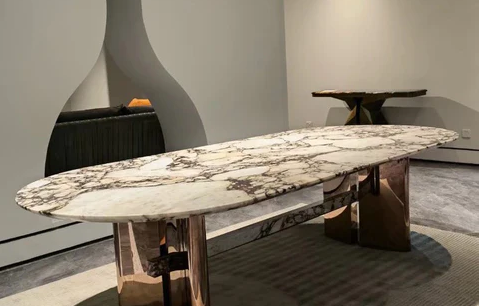Improving indoor air quality is essential for maintaining a healthy and comfortable living environment. Proper ventilation and filtration play key roles in removing pollutants, allergens, and contaminants from the air, reducing respiratory issues and enhancing overall well-being. In this guide, we’ll explore strategies for enhancing your home’s air quality through effective filters and ventilation systems, along with tips for maintaining clean and fresh indoor air.
Subtitles:
- Understanding Indoor Air Quality
- Effective Filters and Ventilation Solutions
Understanding Indoor Air Quality
1. Common Indoor Air Pollutants
Indoor air pollutants can come from various sources such as combustion appliances, tobacco smoke, household cleaning products, building materials, and outdoor pollutants that infiltrate indoor spaces. Common pollutants include:
- Particulate Matter: Dust, pollen, pet dander, and airborne particles.
- Volatile Organic Compounds (VOCs): Chemicals from paints, adhesives, cleaning agents, and furnishings.
- Carbon Monoxide (CO): Produced by combustion appliances like gas stoves, furnaces, and fireplaces.
- Radon: A radioactive gas that can seep into homes from the ground.
- Mold and Mildew: Thrive in damp or humid environments, contributing to respiratory issues.
2. Impact on Health
Poor indoor air quality can lead to a range of health issues, including respiratory problems, allergies, asthma exacerbations, headaches, fatigue, and long-term health risks. Children, elderly individuals, and individuals with pre-existing health conditions are particularly susceptible to the effects of indoor air pollution.
Effective Filters and Ventilation Solutions
1. Air Filtration Systems
Invest in high-quality air filtration systems to remove airborne particles and contaminants from indoor air. Different types of air filters offer varying levels of filtration efficiency and target specific pollutants.
Tips:
- HEPA Filters: High-Efficiency Particulate Air (HEPA) filters capture 99.97% of particles as small as 0.3 microns, including allergens, dust, pollen, and pet dander. Use HEPA filters in HVAC systems and air purifiers for optimal filtration.
- Activated Carbon Filters: Activated carbon filters adsorb VOCs, odors, and chemicals from the air, improving indoor air quality and reducing odors. Combine activated carbon filters with HEPA filtration for comprehensive air purification.
- UV-C Air Purifiers: Ultraviolet-C (UV-C) air purifiers use UV light to neutralize germs, bacteria, and viruses in the air, enhancing air quality and reducing the spread of airborne pathogens.
2. HVAC System Maintenance
Regular maintenance of heating, ventilation, and air conditioning (HVAC) systems is crucial for optimal air quality and efficiency. Schedule professional HVAC inspections, cleanings, and filter replacements to ensure proper airflow and filtration.
Tips:
- Filter Replacement: Replace HVAC filters according to manufacturer recommendations or every 3-6 months, depending on usage and filter type. Use high-efficiency filters with a Minimum Efficiency Reporting Value (MERV) rating of 11 or higher for improved filtration.
- Duct Cleaning: Periodically clean air ducts and vents to remove dust, debris, and contaminants that can accumulate over time. Professional duct cleaning improves airflow and reduces indoor air pollutants.
- Ventilation Checks: Ensure adequate ventilation in kitchens, bathrooms, and laundry areas to reduce moisture buildup and prevent mold growth. Use exhaust fans or open windows when cooking, showering, or using appliances.
3. Natural Ventilation Strategies
Promote natural ventilation to enhance indoor air circulation and reduce indoor pollutant levels. Open windows and doors strategically, use window fans, and create cross-ventilation to exchange indoor air with fresh outdoor air.
Tips:
- Cross-Ventilation: Position windows and doors opposite each other to create a natural airflow path through the home. Use window fans or box fans to facilitate air exchange.
- Time Windows: Open windows during cooler times of the day or when outdoor air quality is favorable, such as early morning or late evening. Close windows during peak traffic or pollution hours.
- Air Quality Monitoring: Use indoor air quality monitors to track pollutant levels and adjust ventilation strategies accordingly. Monitor humidity levels to prevent moisture-related issues.
4. Indoor Plants and Air Purifying Solutions
Incorporate indoor plants known for their air-purifying properties to naturally filter indoor air and improve overall air quality. Certain plants, such as peace lilies, spider plants, snake plants, and pothos, can help remove pollutants and enhance indoor environments.
Tips:
- Plant Selection: Choose air-purifying plants that thrive in indoor environments and require minimal maintenance. Place plants strategically throughout the home, especially in areas with limited ventilation or higher pollutant levels.
- Air Purifiers with Plants: Use air purifiers equipped with HEPA filters and activated carbon technology alongside indoor plants for dual air purification benefits. The combination of filtration and plant-based air purification enhances indoor air quality.
By understanding indoor air quality factors, investing in effective air filtration systems, maintaining HVAC systems, promoting natural ventilation, and incorporating air-purifying solutions, homeowners can significantly enhance their home’s air quality. Regular monitoring, maintenance, and adjustments based on air quality assessments contribute to a healthier and more comfortable indoor environment for occupants. Consult with HVAC professionals, air quality experts, and environmental specialists for personalized recommendations and solutions tailored to your home’s specific needs and air quality goals.
DIY Home Decor: Crafts and Artistic Projects
Adding a personal touch to your home decor through DIY crafts and artistic projects is not only fulfilling but also allows you to create unique pieces that reflect your style and personality. Whether you’re a seasoned crafter or exploring creative endeavors for the first time, DIY home decor projects offer endless possibilities to beautify your living spaces. In this guide, we’ll delve into inspiring DIY ideas and artistic projects to enhance your home’s aesthetic appeal and showcase your creativity.
Subtitles:
- Exploring DIY Home Decor Ideas
- Artistic Projects for Personalized Home Accents
Exploring DIY Home Decor Ideas
1. Wall Art and Décor
Create custom wall art and décor pieces to add visual interest and personality to your walls. Explore various techniques such as painting, stenciling, collage, and mixed media to express your artistic vision.
Tips:
- Canvas Paintings: Use acrylic paints to create abstract, landscape, or floral paintings on canvas. Experiment with different brush strokes, colors, and textures for a unique look.
- Wall Stencils: Use stencils to add intricate patterns, quotes, or motifs to walls. Stencil designs on accent walls, furniture, or canvas for a personalized touch.
- Gallery Wall: Create a gallery wall with a mix of framed artworks, photographs, and DIY creations. Arrange frames in different sizes and shapes for a dynamic display.
2. Upcycled Furniture and Décor
Give new life to old furniture and décor items through upcycling and repurposing techniques. Transform thrifted finds or outdated pieces into stylish and functional additions to your home.
Tips:
- Furniture Makeovers: Refinish wooden furniture with paint, stain, or decoupage techniques. Add new hardware, upholstery, or decorative accents to refresh the look.
- Upcycled Décor: Turn vintage crates into wall shelves, repurpose mason jars as candle holders or planters, and use old doors or windows as decorative accents or room dividers.
- Textile Crafts: Use fabric remnants to create throw pillows, cushion covers, table runners, and wall hangings. Incorporate sewing, embroidery, or appliqué for custom designs.
3. Functional and Stylish Storage
Combine functionality with aesthetics by designing and crafting storage solutions that are both practical and visually appealing. Organize and declutter spaces while adding decorative elements.
Tips:
- DIY Shelving Units: Build floating shelves, ladder shelves, or geometric wall shelves using reclaimed wood or industrial pipes for a rustic or modern look.
- Storage Baskets and Bins: Make fabric baskets, woven baskets, or rope bins for organizing toys, linens, magazines, and everyday essentials. Customize with fabric patterns and embellishments.
- Entryway Organizers: Create entryway benches with built-in storage compartments for shoes, bags, and accessories. Add hooks, baskets, or cubbies for easy organization.
Artistic Projects for Personalized Home Accents
1. Handcrafted Home Accessories
Craft handmade accessories and accents to personalize your home décor and add artisanal touches. Experiment with various materials such as clay, paper, fabric, and natural elements.
Tips:
- Ceramic Pottery: Create hand-thrown or hand-built pottery pieces such as vases, bowls, and planters. Use glazes, textures, and decorative techniques to enhance the finish.
- Paper Crafts: Make origami art, paper sculptures, or quilled designs for wall art, ornaments, and tabletop decorations. Explore paper cutting, folding, and shaping techniques.
- Textile Art: Embellish plain textiles with fabric painting, block printing, tie-dye, or Shibori dyeing techniques. Design custom curtains, tablecloths, pillow covers, and tapestries.
2. Seasonal and Holiday Décor
Celebrate holidays and seasons with handmade decorations and thematic accents that reflect the spirit of each occasion. Create festive décor elements for Christmas, Halloween, Easter, and other celebrations.
Tips:
- Holiday Wreaths: Craft wreaths using natural materials like branches, pinecones, and seasonal foliage. Add ornaments, ribbons, and floral accents for festive flair.
- Seasonal Centerpieces: Design centerpieces for tables and mantels using seasonal flowers, fruits, candles, and decorative elements. Incorporate themes like autumn harvest, winter wonderland, and spring blooms.
- Holiday Ornaments: Make personalized ornaments for Christmas trees using clay, felt, wood, or glass. Create themed ornaments based on hobbies, interests, or family memories.
Embrace creativity and DIY spirit to transform your home with personalized décor, artistic accents, and functional creations. Whether you’re revamping existing pieces, crafting new additions, or exploring seasonal themes, DIY home decor projects offer endless opportunities to express your style, showcase your skills, and make your living spaces truly unique and inviting. Gather inspiration from nature, art, culture, and personal experiences to infuse creativity into every aspect of your home décor journey.








